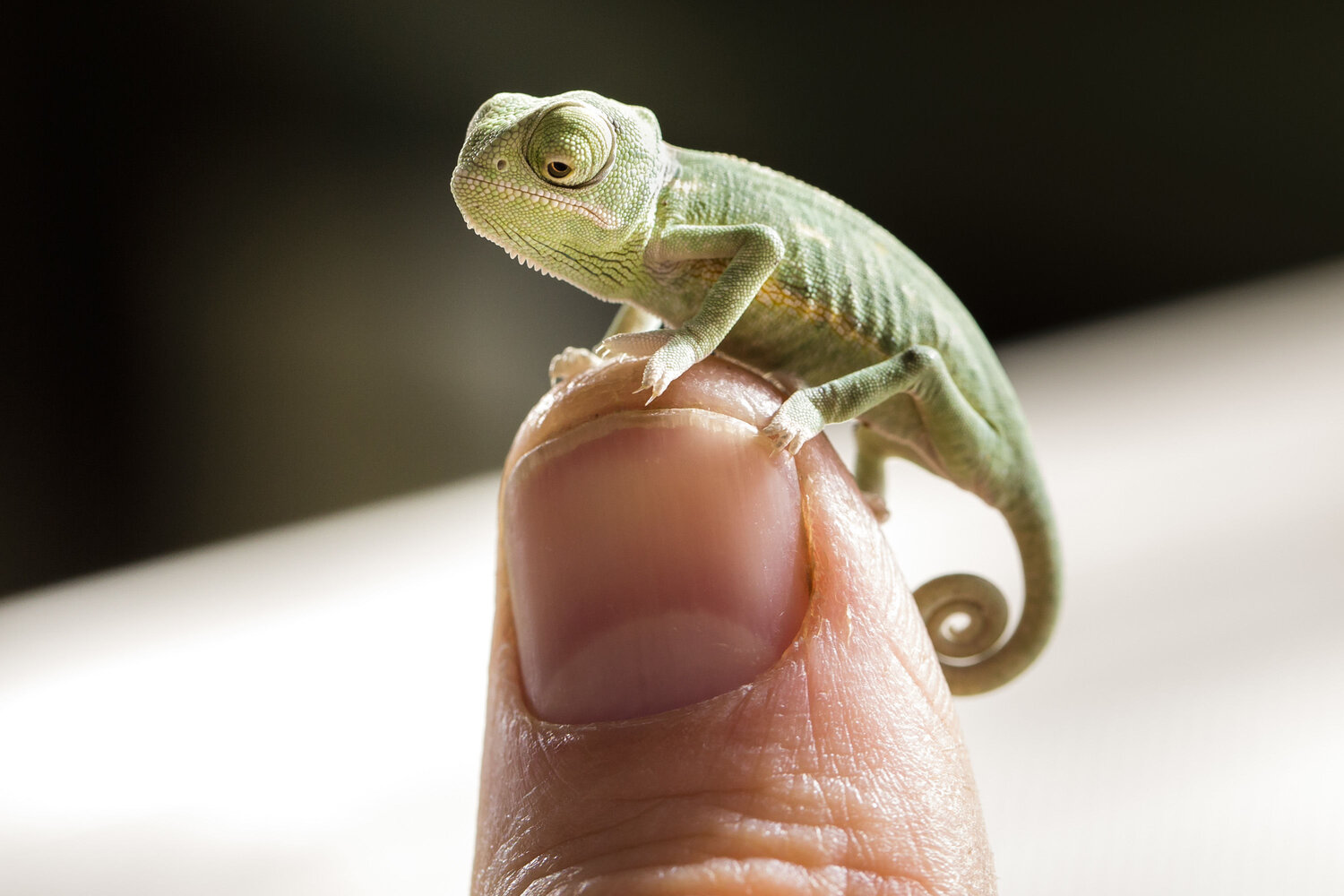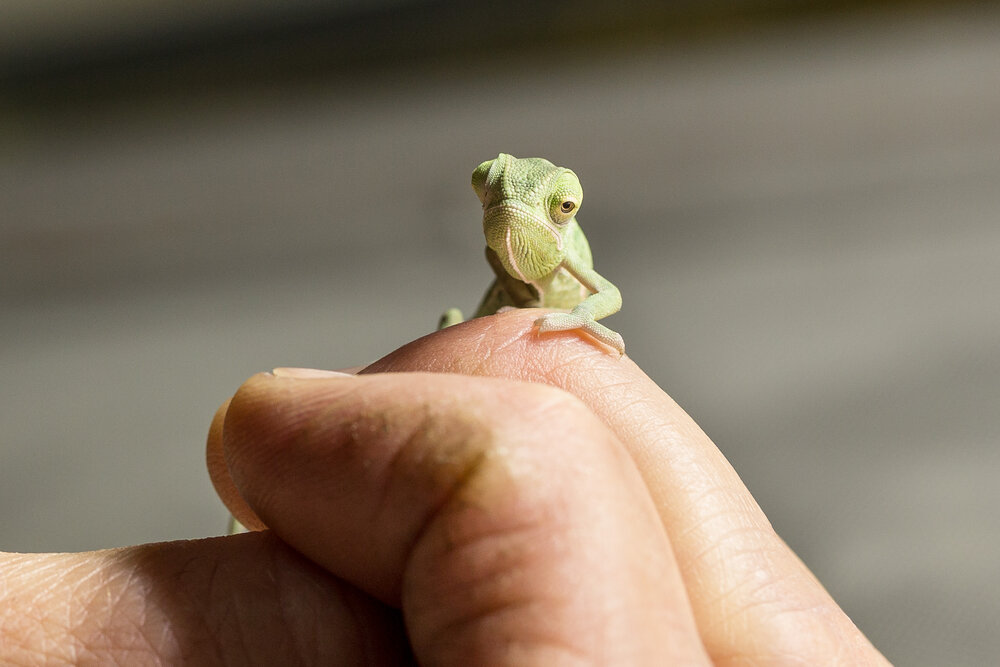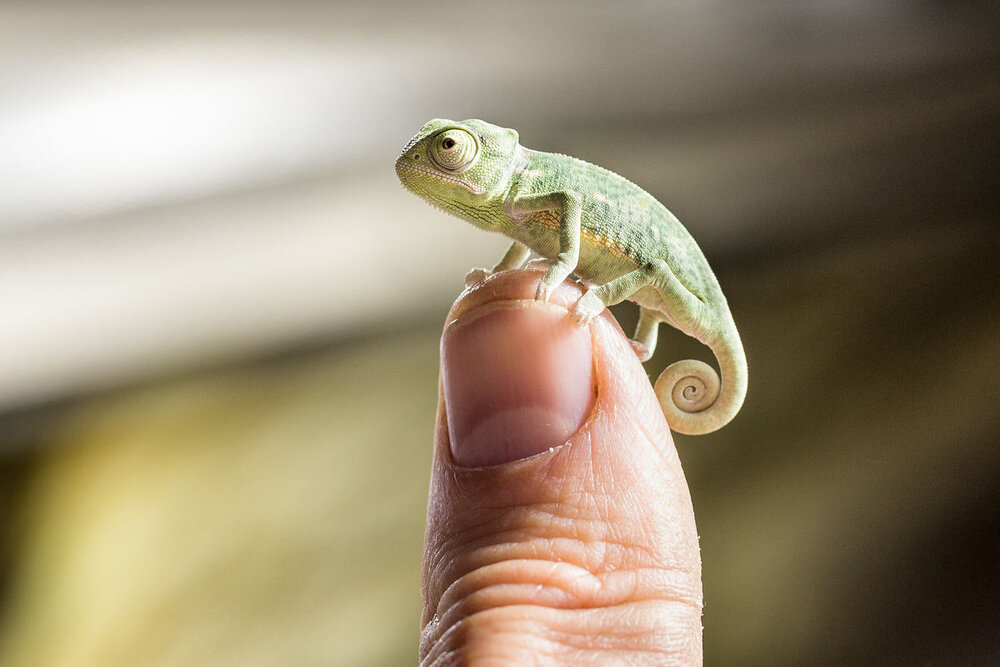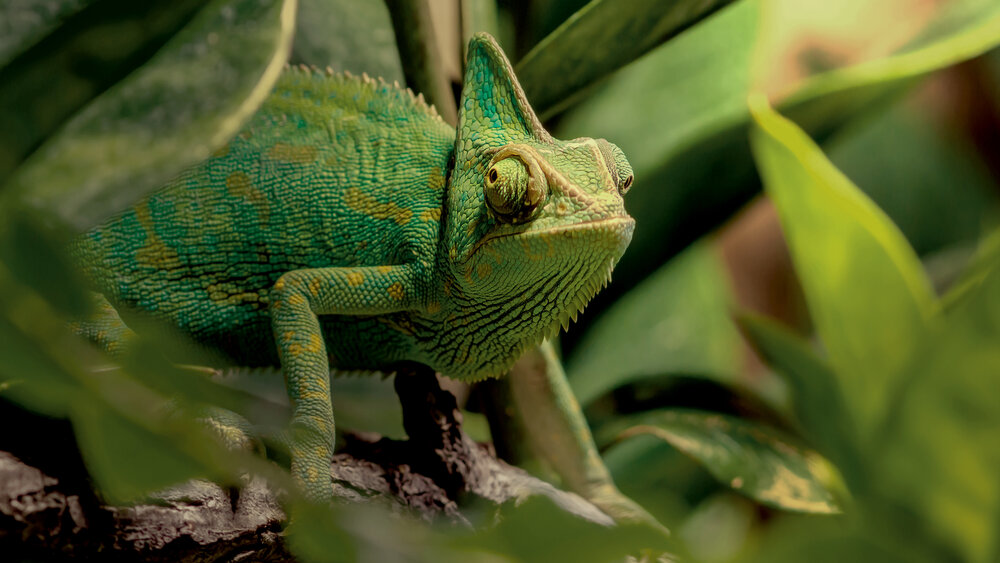Chameleons show their true colours
Masters of colour theory
Red ignites passion, while blue creates tranquillity. We all know that colours influence our mood. Such renowned thinkers as Goethe and Newton also had their own theories about colour. But very few researchers have turned their attention to colour as an expression of mood.
Chameleons not only change colour as a means of camouflage; they also use their extraordinary talent as a way to communicate emotions. If you are familiar with the chameleon colour code, you will be able to tell from a distance if it is feeling scared, relaxed or angry, for example. Skin colour is also influenced by light levels, temperature and humidity. Chameleons appear in a range of hues and patterns that combine green, brown, blue, white, black, yellow and orange. When the Yemen chameleons in Aquarium Berlin go green, we know they’re relaxed. If only we humans could know each other’s mood in advance – that would surely enhance our social interaction!
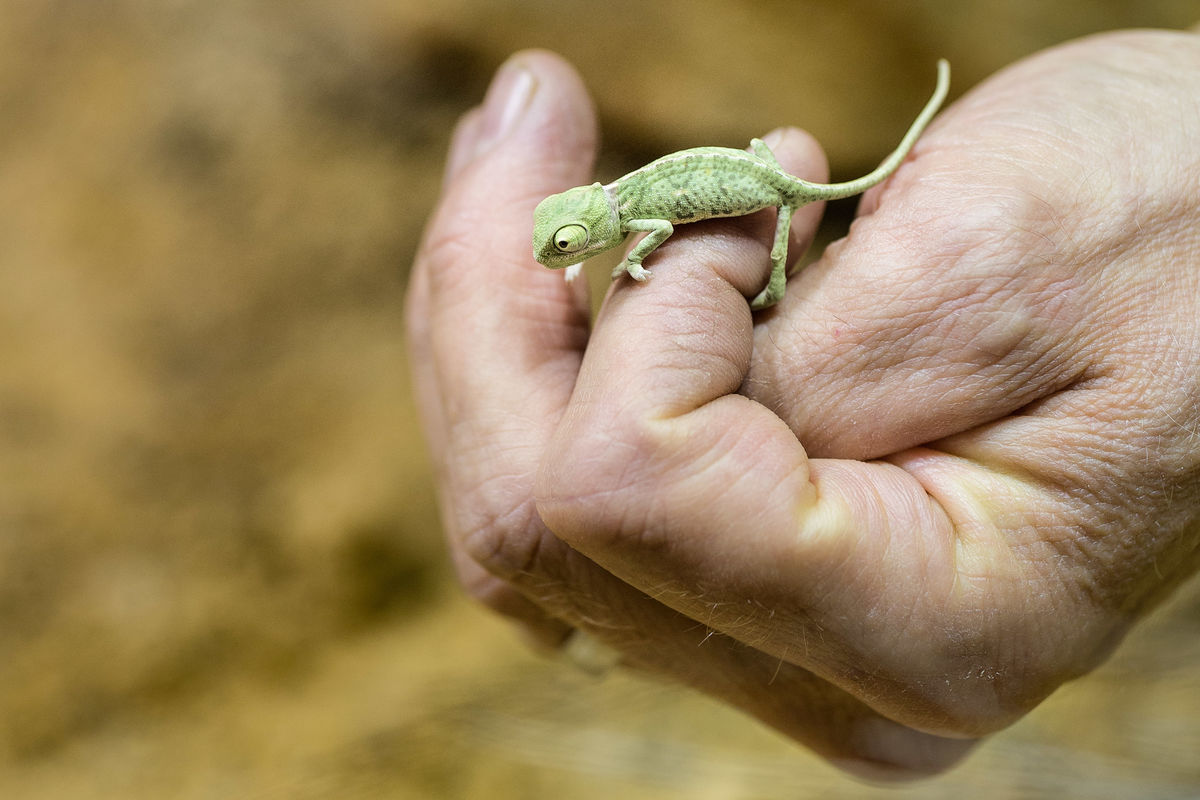

Dressing to impress
The most brightly coloured outfits go on display when two male chameleons compete for the favour of a female. The ladies are drawn to striking colours, so the brightest gentleman is sure to win the day. Dominant males can thus be identified by their gorgeously gaudy garb, while more subordinate males don fairly modest greys and browns. The speed at which males change colour also plays a role in impressing a female and ultimately winning her affections. The female chameleon then selects a skin colour that signals to the gentleman in question whether or not he has piqued her interest. This seems like a much more straightforward way of going about things than trying to manoeuvre the minefield of modern dating!
There are other ways in which chameleons’ colour changes are eminently practical. For instance, females have a particular hue to signal that they are pregnant, and an uninterested individual of either sex can simply choose an inconspicuous colour and slip away unnoticed.
Refresher course in physics
Okay, so it turns out that uncovering the secret to chameleon skin is not something you or I could have managed in a spare minute. Instead it took a whole team of brainy biologists and physicists. Apparently, it all comes down to a lattice of guanine nanocrystals. But you probably guessed that... Right?
Recall briefly your physics classes back in school. Do you remember experimenting with strange glass shapes, otherwise known as prisms? If you do, you might also remember some stuff about the colour spectrum of rainbows: red has the longest wavelength so runs along the outside edge of a rainbow, while violet has the shortest and lies on the inner edge.
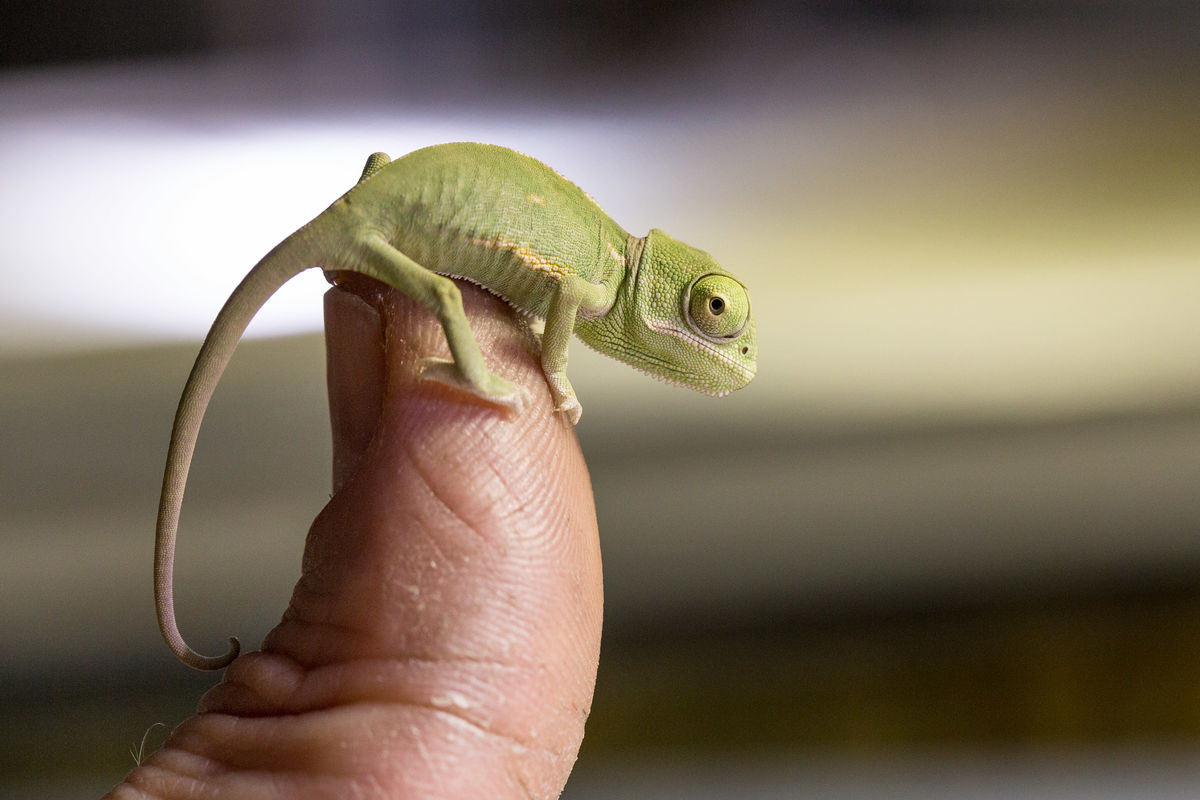
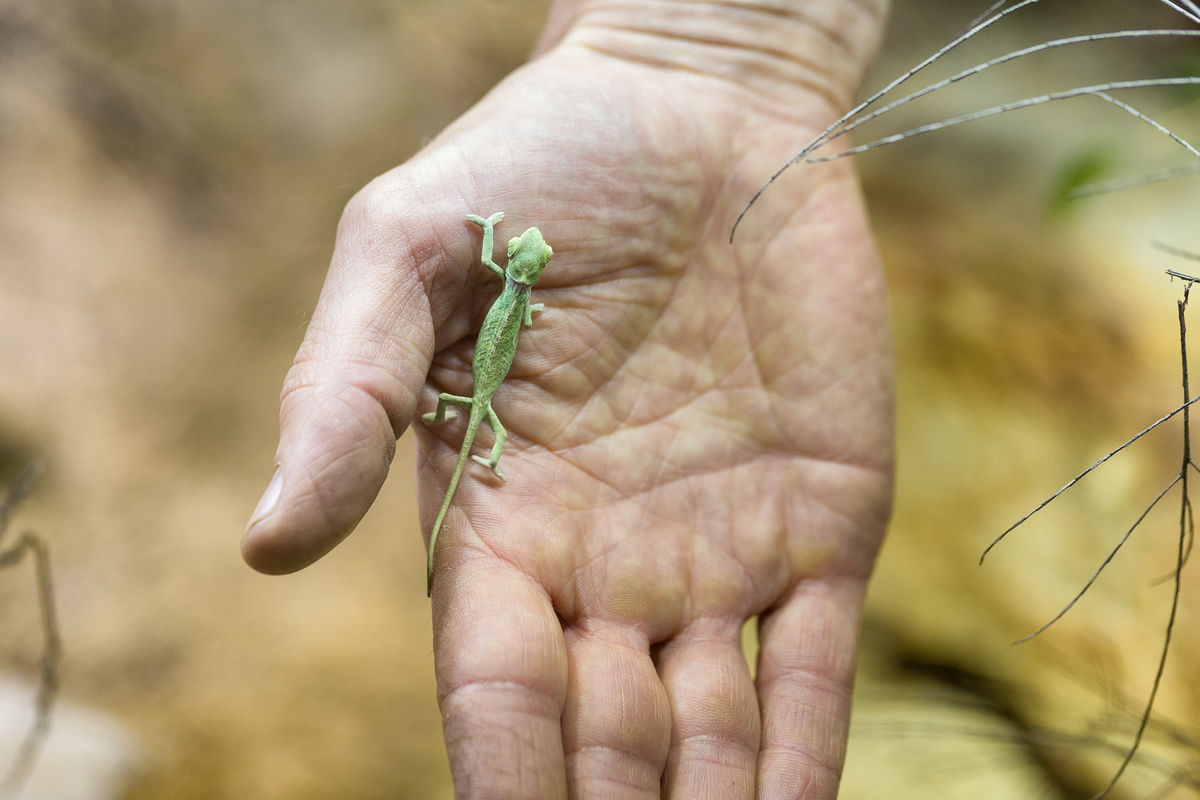
From physics to art and biology – yes, more school!
So it turns out that chameleons have four different layers of skin. The top layer, the epidermis, simply has a protective purpose. The bottom layer can only reflect the colour white. The exciting layers are the two in between. They contain highly specialised pigment-bearing cells known as iridophores. Within those cells are nanocrystals that reflect light, and it is these crystals that are responsible for the chameleons’ remarkable ability to change colour. The two middle layers of skin each play a different role in the transformation process. The second layer contains primarily yellow and red pigments while the third has dark pigments that create browns and blues. Within both layers, the nanocrystals are arranged in a lattice form. Researchers have learned that it is the spacing between the nanocrystals that determines the colour of the chameleon’s skin. If the reptile is relaxed, the crystals in its skin are close together and reflect short-wave blue light, which has to pass through the yellowish pigment in the next layer of skin. And as you will surely remember from primary school art lessons, blue plus yellow makes green – and that is why our chilled-out Yemen chameleons appear green.
Now I have some information that might disappoint you. Contrary to how they are portrayed in popular culture, chameleons cannot take on any and every colour. Each subspecies has its own palette of hues and patterns. These are astonishingly beautiful and varied but, no, if you put a Yemen chameleon on a rainbow flag, its skin will NOT take on stripes of red, orange, yellow, green, blue, indigo and violet. Sorry!
In conclusion:
- We can say that a chameleon’s mood triggers specific nerve impulses and hormonal changes that alter the spacing between nanocrystals in pigment-bearing skin cells.
- As the crystals in two layers of the chameleon’s skin move further apart or closer together, they generate a range of different colours and patterns.
More reasons to go crazy about chameleons
As if their magical colour-changing abilities weren’t enough, here are five more reasons why you should absolutely check out our Yemen chameleons on your next visit to Aquarium Berlin:
- Eyes in the back of their head: Chameleons have a 360-degree arc of vision and can rotate and focus each eye independently. Their big, bulgy eyes are almost entirely covered in eyelid, with just a pinhole large enough for the pupil to see through.
- How does that grab you? Unlike other lizards, chameleons cannot shed their tails. That would be a big disadvantage anyway, as their prehensile tails are extremely useful. The chameleons can grip branches with their tail, making it a kind of fifth foot that comes in very handy when climbing.
- Gaining a foothold: Chameleons’ feet are perfectly adapted to life in the trees. Each foot has five toes, with two pointing one way and three pointing the other. The toes form tight bundles within their group, allowing the chameleons to grip firmly to any kind of branch.
- A sizeable difference: Chameleons don’t only vary in shape and colour, they also vary in size. The males of the smallest species grow to just 1.5 cm long, while the largest species can reach up to 70 cm in length.
